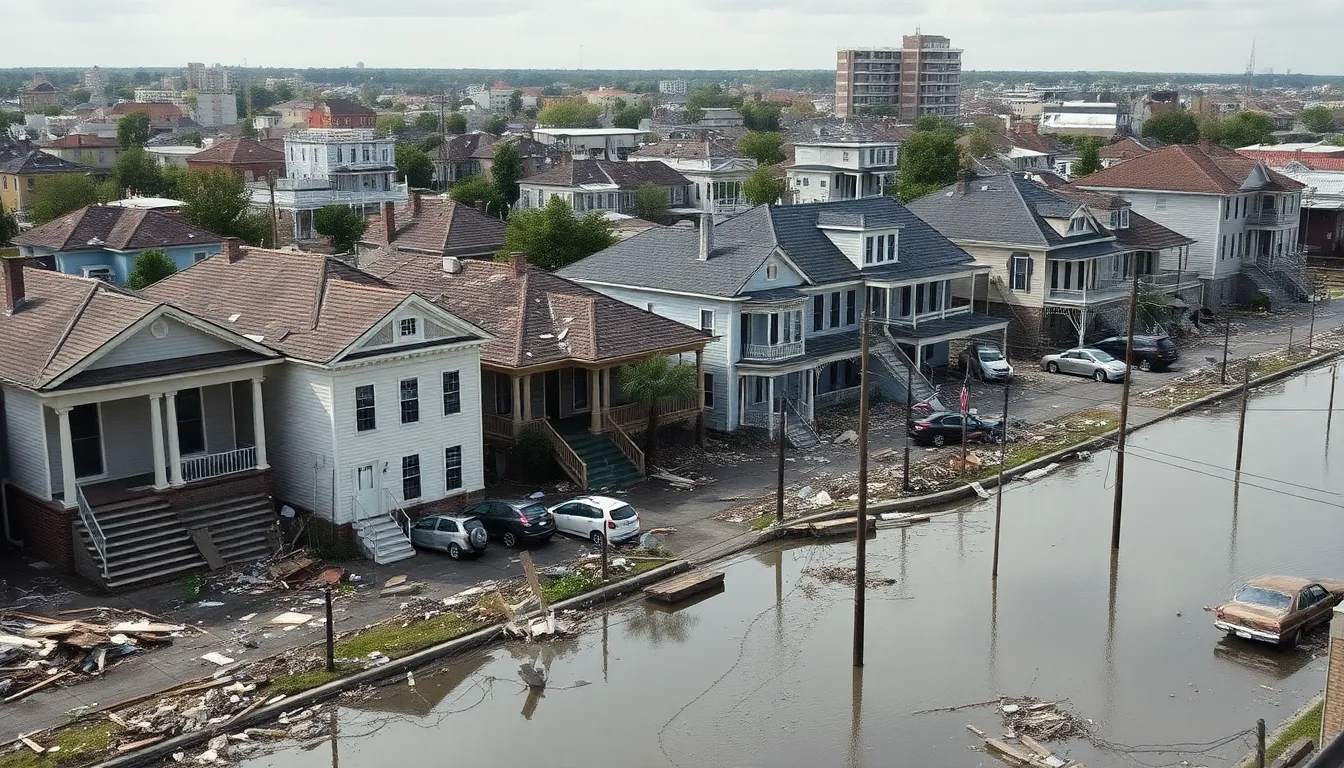When it comes to hurricanes, few names strike fear into hearts like Katrina and Helene. One left a trail of devastation that still echoes in history, while the other is often overshadowed. But was Helene really worse than Katrina? Grab your raincoat and buckle up, because this stormy showdown is about to get interesting.
Table of Contents
ToggleOverview of Hurricanes Helene and Katrina
Hurricane Katrina struck in August 2005, becoming one of the deadliest hurricanes in U.S. history. The storm made landfall in Louisiana, inflicting catastrophic damage on New Orleans. An estimated 1,800 lives were lost, with damages exceeding $125 billion. It produced widespread flooding, failure of levees, and severe infrastructure damage, leading to prolonged recovery efforts.
Hurricane Helene occurred in September 2006, though it didn’t reach the same infamy as Katrina. Helene impacted the eastern coast of the United States, primarily affecting North Carolina. It maintained a high intensity but caused significantly lower fatalities and economic damages. Cost estimates for Helene stand around $150 million. While Helene may not carry the historical weight of Katrina, it generated over 10 inches of rain in some areas, resulting in localized flooding.
Both hurricanes illustrate the destructive potential of tropical storms. Comparatively, Katrina’s broader implications included not only immediate physical damages but also long-term socio-economic repercussions. Helene, in contrast, serves as a reminder of how even lesser-known storms can have considerable local effects.
When considering hurricane scale, the Saffir-Simpson Hurricane Wind Scale categorizes hurricanes by their sustained wind speeds. Katrina reached Category 5 status, while Helene peaked at Category 2. Differences in intensity directly correlate with the extent of devastation experienced.
Discussions around both hurricanes underscore the importance of preparedness and response strategies. Each storm represents unique challenges in disaster management and recovery efforts. Understanding the impacts of these hurricanes helps to enhance future resilience against similar events.
Impacts of Hurricane Katrina

Hurricane Katrina remains a defining disaster in U.S. history, highlighted by extensive human and economic losses. The storm’s impacts continue to be felt years after its occurrence.
Casualties and Damages
Katrina caused tragic loss of life with an estimated 1,800 fatalities. Direct damages exceeded $125 billion, attributing to flooding and levee failures. Infrastructure was severely compromised, resulting in destruction of homes and businesses. Recovery efforts faced numerous challenges due to the scale of the devastation. In contrast, Hurricane Helene, while intense, resulted in significantly fewer issues, with about $150 million in damages and no reported fatalities.
Response and Recovery Efforts
The response to Hurricane Katrina highlighted deficiencies in emergency management. Government agencies struggled to coordinate relief efforts, and many residents faced unnecessary delays in receiving aid. Local and federal organizations launched extensive recovery programs, yet rebuilding efforts took years. Hurricane Helene’s recovery was more localized, focusing on affected communities without overwhelming nationwide resources. Preparedness lessons from Katrina informed subsequent disaster response strategies, emphasizing the importance of effective communication and planning.
Impacts of Hurricane Helene
Hurricane Helene had notable effects on the eastern United States, particularly North Carolina. Though less discussed than Hurricane Katrina, its impact still demands attention.
Casualties and Damages
Hurricane Helene resulted in three reported fatalities. Economic damages amounted to approximately $150 million. Comparatively, it is significantly lower than Katrina’s mammoth toll. Localized flooding and rainfall levels exceeding 10 inches caused infrastructure strain in affected areas. City roads and homes experienced damage, affecting lives and livelihoods. While Helene caused disruptions, its consequences were not as catastrophic as those of Katrina.
Response and Recovery Efforts
Response efforts for Hurricane Helene involved local and state emergency agencies. Coordination improved compared to past storms, ensuring quicker action. Rescue operations deployed to flooded regions facilitated timely assistance for those affected. Communities also banded together, providing support to their neighbors. Recovery proved more manageable due to lower overall damage, allowing quicker restoration of services. Lessons learned from Hurricane Katrina informed these response strategies, enhancing preparedness in the wake of Helene’s challenges.
Comparative Analysis
The comparison between Hurricane Katrina and Hurricane Helene reveals significant differences in their impacts and aftermaths.
Severity of Storms
Katrina registered as one of the deadliest hurricanes in U.S. history, with over 1,800 lives lost. The storm’s intensity exceeded category three, causing extensive flooding and catastrophic levee failures. Helene, rated as a weaker storm, produced localized flooding primarily along North Carolina’s eastern coast. While Helene caused around three fatalities, its damage was significantly less severe, totaling approximately $150 million. Furthermore, Helene brought substantial rainfall, exceeding 10 inches in certain areas, but did not inflict widespread destruction like Katrina.
Long-Term Effects
Long-term consequences from Katrina continue to affect New Orleans and surrounding areas. Recovery has been slow due to socio-economic challenges and infrastructure deficits. Comparatively, Helene’s impact led to a more manageable recovery process. Local agencies demonstrated improved coordination in response efforts, enabling quicker aid and support for affected communities. Although Helene’s damages were less extensive, the lessons learned contributed to more effective future disaster management strategies. Both hurricanes underscore the necessity for preparedness and response planning to mitigate similar disasters in the future.
The comparison of Hurricanes Katrina and Helene reveals stark contrasts in their impacts and aftermaths. Katrina’s catastrophic devastation and the resulting socio-economic challenges continue to resonate years later. In contrast Helene’s localized effects highlight the importance of recognizing and preparing for storms that may not make headlines but still pose significant risks.
Both storms serve as critical reminders of the need for effective emergency management and community preparedness. Understanding their differences can help improve future responses to hurricanes and foster resilience in vulnerable areas. As communities reflect on these events it’s clear that preparedness and swift action are essential to mitigating the effects of any storm.



